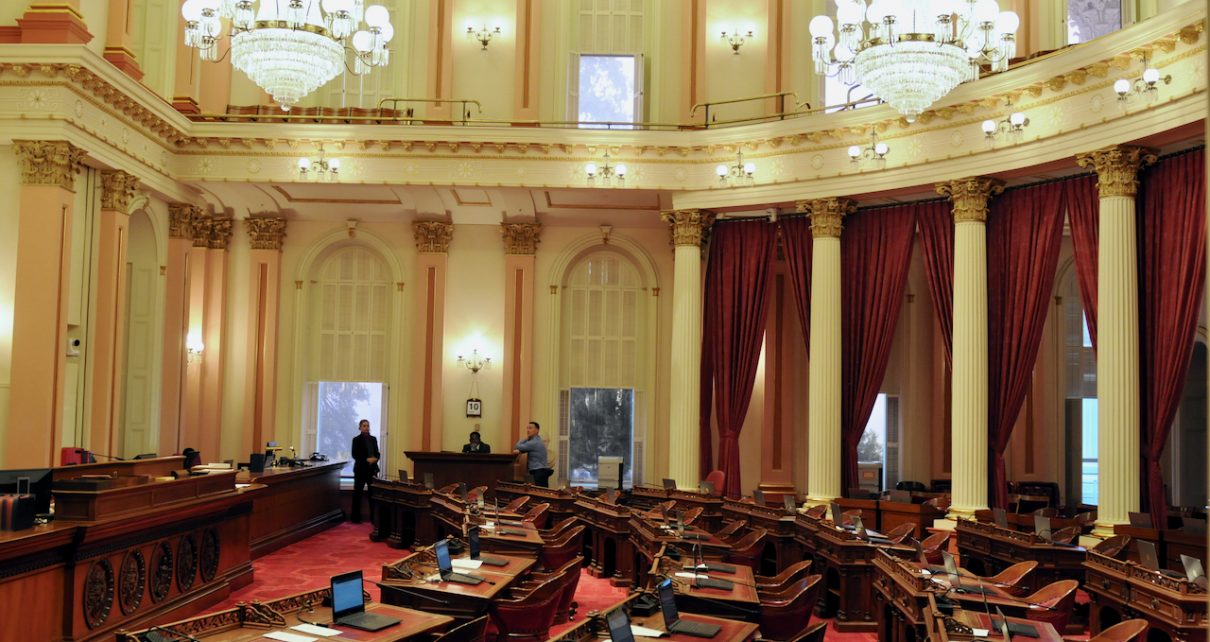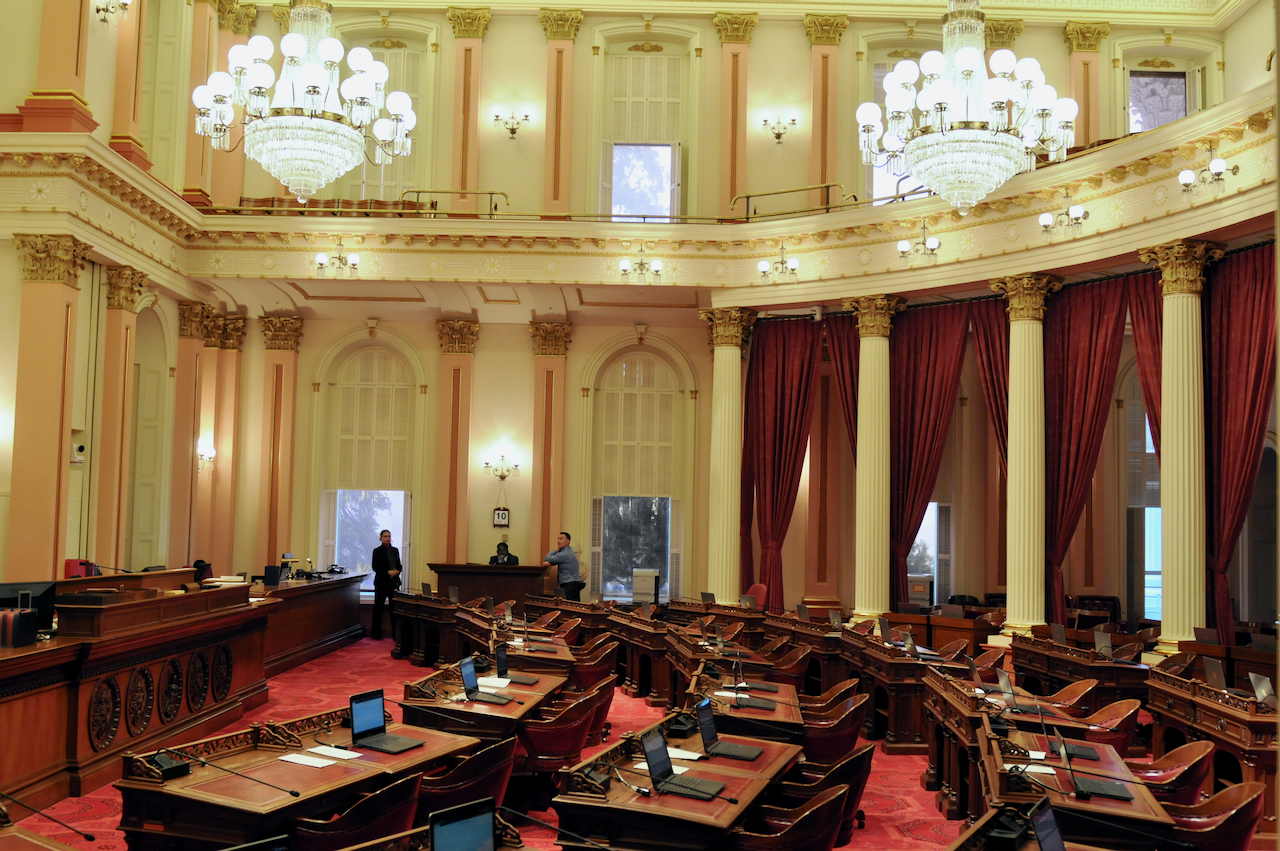
California Senate Chambers. (Photo: Kevin Sanders for California Globe)
Canon of Statutory Construction – Whole Act Rule
We start with the presumption that the Legislature drafts its bills carefully and intentionally
By Chris Micheli, October 26, 2022 8:41 am
For purposes of statutory construction, the courts and bill drafters use a series of “canons” to guide them. These include textual canons (intrinsic aids), linguistic presumptions and grammatical conventions, substantive canons, and extrinsic aids. It is impossible to list them all, but there are some common canons, and those are most useful for legislative drafting.
We start with the presumption that the Legislature drafts its bills carefully and intentionally. Because of this presumption, the usual approach of the judicial branch is to narrow statutes rather than expand them, and the courts are less activist in their interpretation.
The Whole Act Rule provides that statutory provisions should be interpreted so they have a whole, coherent meaning. In other words, identical words in the same or related statutes should have the same meaning ascribed to them. The basis for this rule is that the canon of construction assumes that the legislature drafts purposefully and is consistent in their word use.
As a result, the Whole Act Rule is a textual canon that provides, when construing a statute, the text of the entire statute as a whole must be considered by the court.
- ‘Bottomry’ in California - December 8, 2025
- Interstate Depositions and Discovery Act - December 7, 2025
- Trial by the Court in California - December 7, 2025




One thought on “Canon of Statutory Construction – Whole Act Rule”